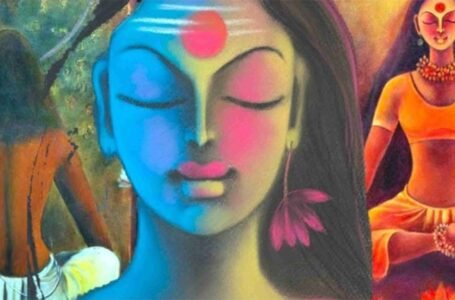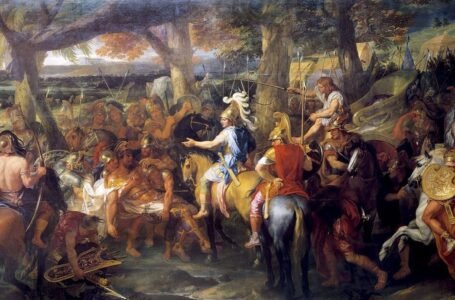Unniyarcha – A legendary warrior from the 16th century

~Debashri Mandal
Stories of female legends and warriors have been scarce in history, but they have never been absent. And Unniyarcha is one of them. Also spelled as Unniyarchaa, is a legendary female warrior and remains one of the most radiant figures in the pantheon of Kerala’s oral epics, celebrated in Malayalam folklores such as the Vadakkan Pattukal, or ‘Northern Ballads,’ that blend legend, history, and myth into tales of honour and martial valour. Panans, a group of wandering bards, sang her songs, portraying her both as a warrior heroine and an extraordinary independent woman. Her name is still remembered for her courage, justice, and defiance against oppression till today.
Unniyarcha is believed to have been a contemporary of the 16th century in the northern region of Malabar in Kerala. She was born into the family of Puthooram Veedu of Chekavars within the Thiyyar or Ezhava community in Kadathanad and was renowned for their warriors, skilled in Kalaripayattu, the traditional martial art of Kerala. She grew up in a household where martial valour was the measure of worth. Her father, Kannappa Chekarwar, was a respected Kalari master who trained all his children, including his daughters, in Kalarippayattu, the ancient martial art of Kerala. In a period where women were largely confined to domestic care, Unniyarcha’s initiation into the Kalari marked a radical act of women’s empowerment in that society.
She was trained rigorously, mastering not only hand-to-hand combat but a full arsenal of weapons. However, her choice of weapon was the ‘Urumi,’ a whip-like sword that requires exceptional control and agility. Even seasoned warriors feared it, as it could coil around an opponent and strike from multiple angles. It was said that mastering the Urumi symbolizes complete command of body and mind, lethal yet indomitable. In most versions of the ballads, Unniyarcha’s beauty and fiery spirit drew many admirers, but she refused to be treated as an object of desire. Chandu Chekarvar, one of her cousins and a suitor, would later become the central antagonist in her story. When Unniyarcha rejected his advances, Chandu’s wounded pride turned into venomous jealousy that echoed the tragic cycles of betrayal and vengeance that dominated the ‘Vadakkann Pattukal.’ Further, her choice of husband displayed her autonomy. Defying social expectations, she married ‘Attum Manammel Kunjiraman’, a Kalari instructor. Folklore says Kunjiraman was mild in manner, even a bit timid in contrast to the fierceness of Unniyarcha. The ballads here subtly critique the patriarchy, calling the woman instead of the man, the family’s protector and breadwinner.
Unniyarcha’s journey to the ‘Allimalar Kavu festival’ is considered to be the most celebrated episode in her legends. She and her husband were waylaid by bandits who intended to rob them and molest her. Her mother-in-law had warned her not to travel, but Unniyarcha refused to bow to fear. When the ambush came, she confronted the attackers herself, drawing her urumi with practised poise, signing through the air as men fell one after another. The leader of the ruffians, realizing who she was, the sister of Aromal Chekavar, another central hero of the Vaddakan Pattukal, halted the fight and begged forgiveness. Unniyarcha’s response was characteristically righteous rather than vengeful: she demanded that the chieftain swear that no woman would ever again be harassed on that path. Only after the pledge was made did she withdraw her weapon. It tells about Unniyarcha’s sense of justice that was above personal pride. She was not only defending herself but was asserting the dignity of all women.
In Kerala’s oral culture, this moment holds a symbol of female resistance and self-defense. In some local traditions, women still remember Unniyarcha’s name before entering Kalari, seeing her not as a legendary heroine but as an embodiment of empowerment. While the Vadakkan Pattukal has sunk into shadow, many scholars believe it contains the core of historical truth. The Chekavars were a group of sub-warriors employed by chieftains in the feudal landscape in 16th-century Kerala. Their ‘ankams’ were legal practices, where combat was a ritual that determined the outcome of disputes. In this, a female warrior like Unniyarcha might have existed, though later the retelling of her stories amplified her legend. Some historians also note the Ezhava dimension of the story; in the era dominated by Namboothiri Brahmin and Nair elites, the legends elevate an Ezhava woman to a heroic status. This ignored the power and authority of the caste system, glorifying that valor and virtue are above social rank. That such a figure has been loved across caste lines speaks volumes about Kerala’s cultural pluralism.
Another lesser-known fact of Unniyarcha’s life lies in temple worship and local ritual memory. In parts of Malabar, shrines known as kavu have been dedicated in her honor, where women pray for courage. In some kalari schools, her portrait is placed beside deities such as Bhagavathi and Gurunathan. Unniyarcha’s legend has inspired countless stories retold in literature, film, and popular culture. The 1961 Malayalam film ‘Unniyarcha,’ starring Ragini, presented her as a proto-feminist icon, while the 1989 classic Oru Vadakkan Veeragatha, with Madhavi portraying her alongside Mammootty’s Chandu, characterized the rivalries of the ballads and explored her moral strength. Today’s novels and poems retell her story as one of gendered defiance, depicting her not simply as a warrior but as a woman who fought against the patriarchy itself. Yet beyond these dramatizations, there are lesser-known aspects of her memory. In some of the oral versions collected from Kannur and Kozhikode, Unniyarcha is said to have continued teaching kalari into old age, training young girls from neighboring villages. Others describe her as a local mediator, settling disputes and ensuring that the honor was upheld among warriors, so she was not just a fighter but a custodian of ethics and discipline.
What makes Unniyarcha timeless is not just her martial feats but the symbolism she embodies. She represents a rare synthesis of courage and compassion, independence and integrity. In her, Kerala found a figure who could challenge gender norms without rejecting cultural values, a woman who fought like a warrior. In today’s Kerala, where Kalaripayattu has reemerged as both an art form and a heritage, Unniyarcha’s spirit continues to inspire. Women practitioners often trace their lineage to her heroic example. Her name, given to girls across the state, signifies not because of her beauty or gentleness, but strength, self-respect, and fearlessness.
Ultimately, Unniyarcha’s story transcends its time. Whether she lived exactly as the ballads say is immaterial; what matters is the power of her image—a woman who mastered the sword and the self, who fought not just for vengeance but for justice, and who carved her name into history’s song with the edge of an urumi.


